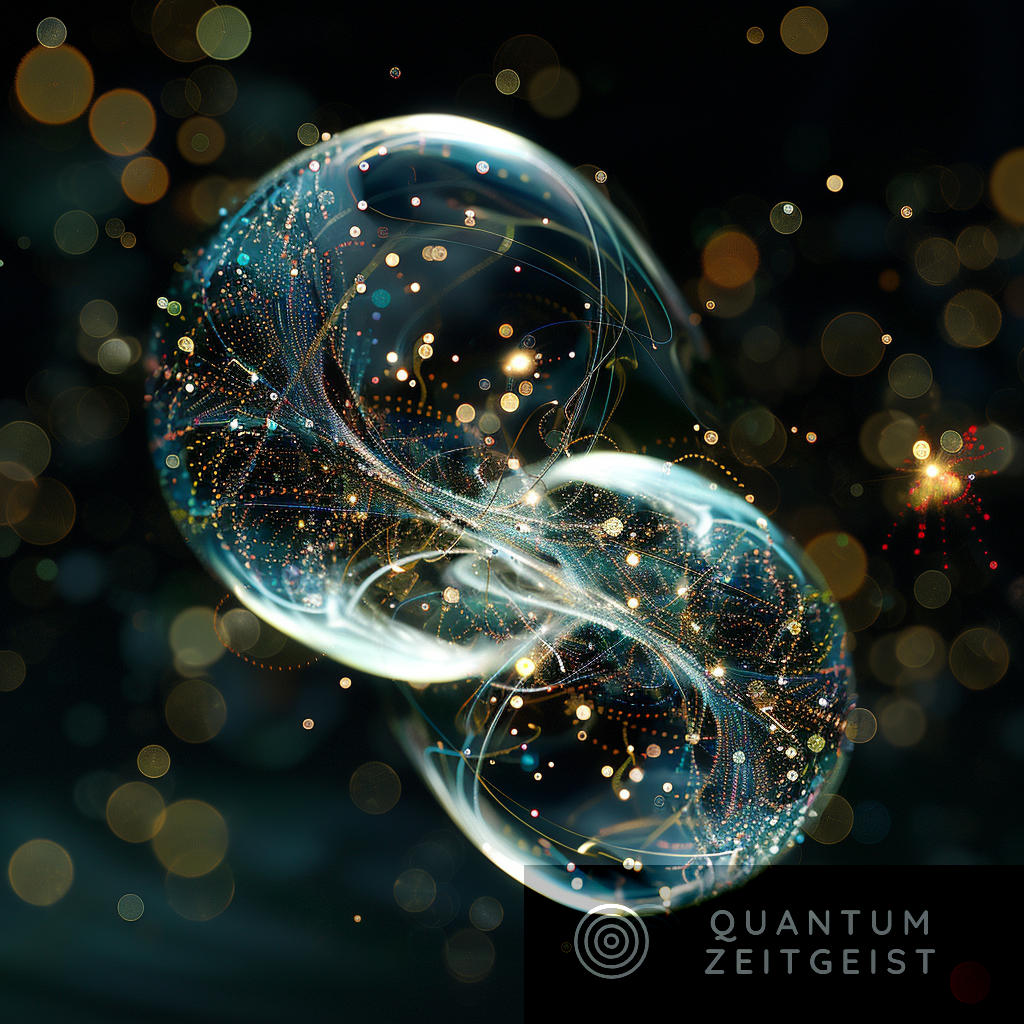Researchers from the Weizmann Institute of Science in Israel have discovered a new class of macroscopic spin states, known as coherently radiating spin states (CRSSs), which suggest that quantum entanglement may be essential for the emergence of classical behavior in a radiating spin system. CRSSs exhibit several interesting features, including a magnetization phase transition and the ability to radiate classical coherent light, despite being a quantum entangled state. This research could have significant implications for our understanding of quantum mechanics and its applications, potentially leading to new technologies in fields such as quantum computing and quantum metrology.
What is Quantum Entanglement, and How Does it Relate to Classical Physics?
Quantum entanglement is a fundamental feature that distinguishes quantum physics from classical physics. However, a recent study by Ori Somech and Ephraim Shahmoon from the Department of Chemical Biological Physics at the Weizmann Institute of Science in Israel, suggests that entanglement may also serve as the essential ingredient for the emergence of classical behavior in a radiating spin system. The researchers considered the relationship between the state of a macroscopic spin, such as an atomic ensemble, and the radiation it emits.
The researchers introduced a new class of macroscopic spin states, known as coherently radiating spin states (CRSSs), defined as the asymptotic eigenstates of the SU2 lowering operator. They found that a spin emitter in a CRSS radiates classical coherent light, although the CRSS itself is a quantum entangled state exhibiting spin squeezing. This finding suggests that entanglement between constituent particles is essential for the emergence of a classical response to light.
What is the Significance of Coherently Radiating Spin States (CRSSs)?
The researchers found that CRSSs possess several interesting features. Firstly, they are non-classical states exhibiting spin squeezing that increases as the spin increases. For a spin describing two-level atoms, this means that the constituent atoms are pairwise entangled. Secondly, the CRSS generically exhibits a magnetization phase transition. Thirdly, the CRSS is naturally realized as the steady state of driven-dissipative Dicke superradiance and is at the origin of the dissipative Dicke phase transition. This allows for new analytical predictions, such as the scaling of the best achievable spin squeezing in superradiance.
Lastly, the radiated light from a CRSS is a coherent state whose amplitude is proportional to the spin. For superradiance, this leads to the prediction that the macroscopic spin dipole, although being a highly nonlinear quantum system, scatters light just like a linear classical system. The CRSS then forms a remarkable case where entanglement between constituent particles is essential for the emergence of a classical response to light.
How Does Quantum Entanglement Affect the Classical Limit of a Macroscopic Spin Emitter?
The researchers found that a macroscopic spin in a coherent spin state (CSS) does not act as a classical radiating dipole; it emits quantum correlated light rather than coherent-state light. In contrast, a CRSS, a quantum entangled spin state, radiates classical light. Hence, for macroscopic spin emitters, there is no clear classical limit; either the spin is classical or the light, but not both.
To further explain this result, the researchers established the connection between quantum fluctuations in spin and light by introducing the concept of dipole-projected squeezing. This concept suggests that a CSS, considered as the classical state of the spin, radiates quantum correlated light, while a CRSS, a quantum entangled spin state, radiates classical light.
What are the Practical Applications of CRSSs?
CRSSs are not just theoretical constructs; they have practical applications in various platforms, ranging from quantum metrology and lasing to phase transitions. They are naturally realized in Dicke superradiance, a phenomenon where an ensemble of atoms or artificial quantum emitters, characterized by a collective macroscopic spin, emit light in a highly correlated manner.
More generally, CRSSs form a new family of pure entangled many-body spin states and should therefore play a role in collective-spin problems beyond superradiance. For instance, the researchers showed that the CRSS can appear as the ground state of certain Ising many-body spin Hamiltonians, a model used in statistical mechanics to describe ferromagnetism.
What are the Future Implications of this Research?
This research provides a promising concept for studying many-body spin systems in various platforms. The discovery of CRSSs and their properties could lead to new insights into the relationship between quantum and classical physics, particularly in the context of radiating spin systems.
Moreover, the realization that entanglement may serve as the essential ingredient for the emergence of classical behavior in such systems could have far-reaching implications for our understanding of quantum mechanics and its applications. Future research will likely explore these implications further, potentially leading to new technologies and applications in fields such as quantum computing, quantum communication, and quantum metrology.
Publication details: “Quantum Entangled States of a Classically Radiating Macroscopic Spin”
Publication Date: 2024-03-21
Authors: Ori Somech and Ephraim Shahmoon
Source: PRX Quantum 5, 010349
DOI: https://doi.org/10.1103/PRXQuantum.5.010349

